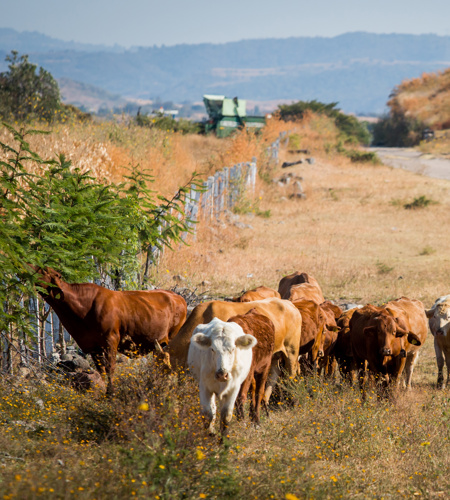

Texas is comprised of 142 million acres of private farms, ranches and forests, leading the nation in land area devoted to privately owned working lands. These lands provide substantial economic, environmental and recreational resources that benefit all Texans.
Rapid population growth is driving suburbanization, rural development, and ownership fragmentation that increasingly threatens working lands. These threats result in a fundamental change in the Texas landscape, impacting:
- rural economies,
- food and water security and
- conservation of natural resources.
The Texas Land Trends project monitors the status and changes in land use, ownership size, and land values of working lands. Research results are published as topic-based reports through the txlandtrends.org, an award-winning interactive website. Users can also explore and query the Texas Land Trends data through the web-based mapping service. Texas Land Trends provides decision-makers and stakeholders with timely information to support working lands' conservation and strategic planning within a spatially explicit context.
Here's a preview of a few tools we've developed through the Texas Land Trends project:
This tool allows users to curate land trend data based on their area or areas of interest. Users' custom data queries generate summary statistics demonstrating land demographic data in three primary categories: land use, land values, and ownership. These data are displayed through interactive mapping, tables, graphs, and general text to allow unique visualization of occurring changes in the selected areas of interest.
We developed a web mapping application that allows users to view and map natural resource data and then publish a summary report on an area of interest. TxMAP enables users, such as private landowners, to define a location to perform an intersect query based on user input of geospatial data layers. The data is grouped into categories that match our program areas of Wildlife Conservation, Rural Land Trends, Military Sustainability, and Private Land Stewardship. The tool produces a report with maps and relevant information for the landowner to use in property management plans.
About the Texas Land Trends Data
The Texas A&M Natural Resources Institute’s (NRI) Texas Land Trends project informs private and public decision-makers about the status and trends of our state’s working lands through the detailed curation and combination of multiple statewide datasets. NRI’s policy is to operate this project based on scientifically and statistically developed principles and protocols. Inherent to this policy is our necessity to maintain and protect the integrity, validity, and security of our data, analyses, and processes.
NRI has dedicated significant resources to developing the methodology used to create our Texas Land Trends database and does not share shape files or raw data with external entities. However, public usability and access to this data is a cornerstone of Texas Land Trends, leading to the creation of our innovative Data Explorer tool. Users can explore specific areas of interest (e.g., counties or ecoregions) or view statewide trends, with results presented through tables, charts, graphs, and maps alongside informative text to help explain common trends. This web tool allows users to visualize the data and even download select graphics. See our About the Data page for all data sources and descriptions.
-
25th Anniversary Report: Status Update and Trends of Texas Working Lands 1997-2022
Feb 2025
Addie Smith, Roel Lopez, Alison Lund, Ross Anderson, Brittany Wegner, Amanda Anderson, Matt Crawford, Garrett Power, Kevin Skow, Angelica Lopez -
Conserving Texas: Quantifying Ecological Return on Investment
Jan 2023
Alison Lund, Addie Smith, Roel Lopez -
Texas Ecosystem Services: A statewide assessment
Oct 2022
Texas A&M Natural Resources Institute, Texas Agricultural Land Trust, Natural Resources Conservation Service -
Status Update and Trends of Texas Working Lands 1997 - 2017
Dec 2019
Addie Smith, Roel Lopez, Alison Lund, Brittany Wegner, Jim Cathey, Angelica Lopez, Ross Anderson, Garrett Powers, Kevin Skow, Matt Crawford -
West Texas Landowner Report: Energy and Growth Trends
Dec 2019
Angelica Lopez, Roel Lopez, Kevin Skow, Matthew Crawford -
Trends in Land Ownership Along Texas Borderlands
Jun 2019
Angelica Lopez, Alison Lund, Matthew Crawford, Addie Smith, Kevin Skow, Joshua Cross, Louis Harveson and Roel Lopez -
Changes in Texas Working Lands 5 Year Summary
Jun 2019
Texas Land Trends -
A Report For The Future of Rural Texas
Apr 2019
Texas A&M Natural Resources Institute and the Texas Rural Funders Collaborative -
Conservation Easements in Texas
Jan 2019
Alison Lund, Addie Smith, Angelica Lopez, Roel Lopez, Jeremiah H. Leibowitz -
Texas Land Trends
Oct 2014
R. Anderson, A. Engeling, A. Grones, R. Lopez, B. Pierce, K. Skow, T. Snelgrove











